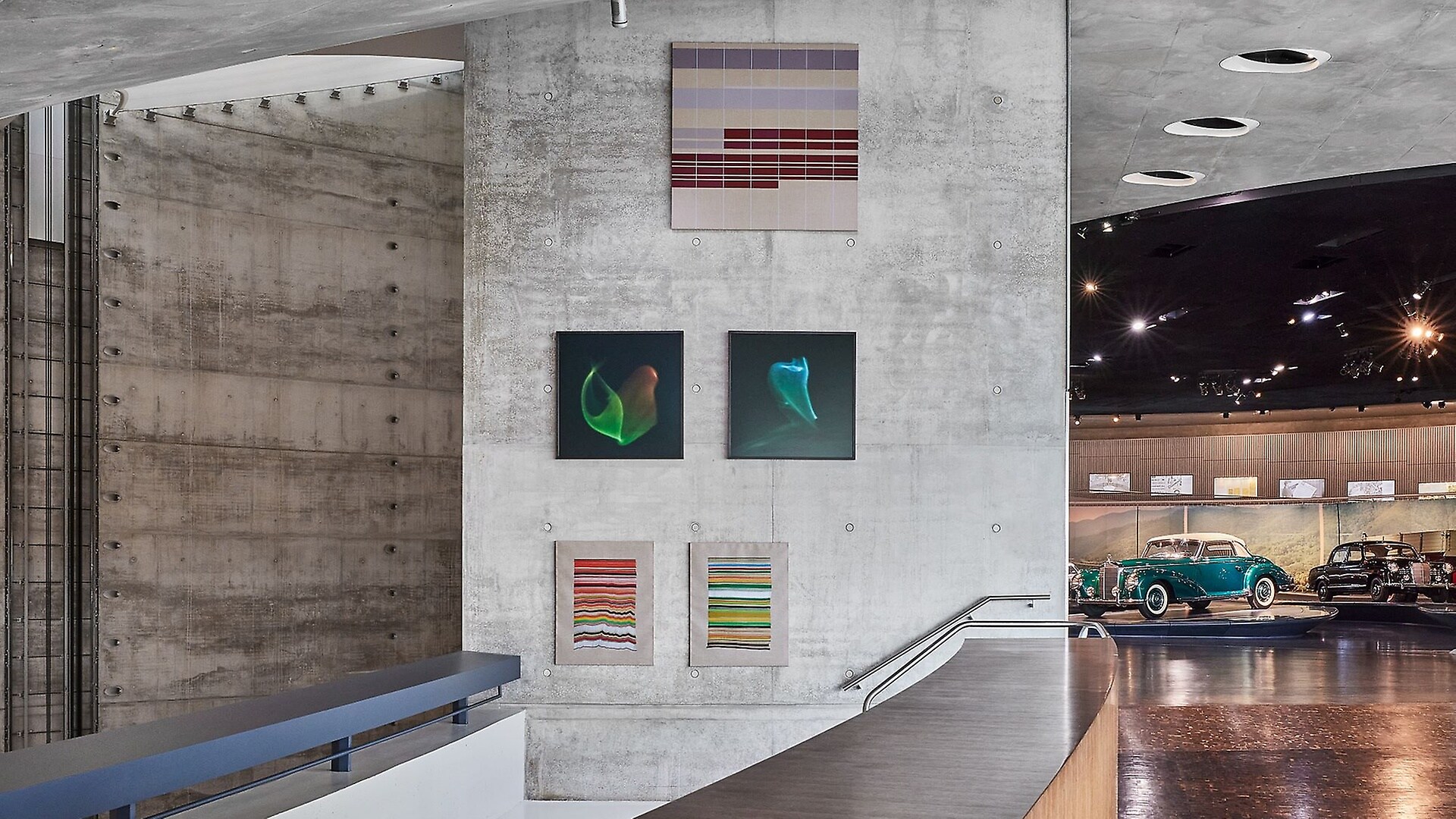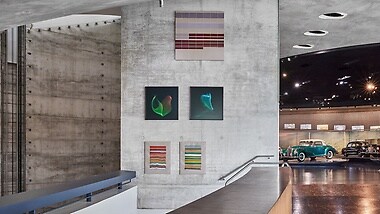Sung Tieu, Selma Selman and Paulo Nazareth explore their family roots and cultural identity. Their works are based on questions that deal with post-colonial aspects such as social grievances, global migration and the treatment of ethnic minorities. Selma Selman, for example, paints self-portraits or scenes from her life on disused car parts – preferably from Mercedes-Benz cars. Like the motifs, the vehicle fragments also refer to the artist’s personal history: she grew up as the daughter of a scrap dealer in Bosnia-Herzegovina, where a discarded car was not considered rubbish, but rather as a means of providing for the family. Against this backdrop, the unusual picture media are an integral part of Selma Selman’s identity.
Florina Leinß, Gerold Miller and Simone Westerwinter devote themselves to formal-aesthetic considerations in dialogue with the heritage of Concrete Art and Minimal Art – a central focus of the Mercedes-Benz Art Collection. In one of her work approaches, Simone Westerwinter deals specifically with the cultural significance of abstract patterns. In her piece Karo Star, she focuses on the popular chequered pattern. The clear order and symmetry of the pattern are broken up by a bright pink, irregular rectangle sewn into the upper red square. Westerwinter thus questions ideas of harmony and familiar aesthetics.
All the works of art on display are integrated into the permanent exhibition at the Mercedes-Benz Museum. Content-wise, the works of Finnegan Shannon, Sergio Fermariello and Andy Warhol enter into a dialogue with the respective exhibition environment, for example. In Collection Room 3: “Gallery of Helpers”, emergency vehicles used to rescue and care for people take centre stage. The bright blue bench by Finnegan Shannon also picks up on the idea of caring: with the printed phrase “I’d like to linger here. Rest here if you agree.”, Shannon draws attention to the needs of people with reduced mobility, highlighting the lack of accessibility in many public and private spaces.
,xPosition=0,yPosition=0.5)






,xPosition=0.5,yPosition=0)